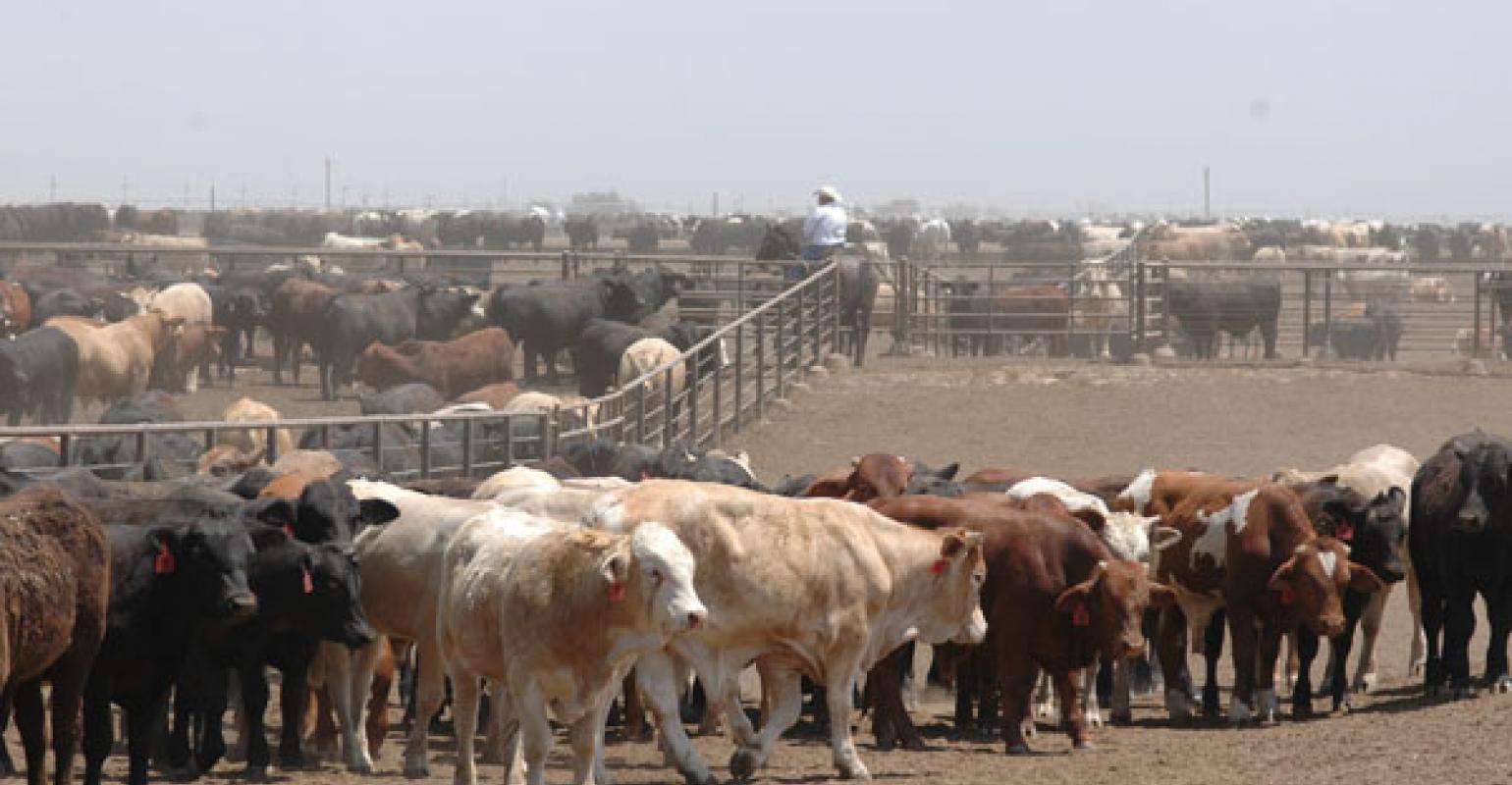
Agricultural News
Smaller Feedlot Numbers Ahead says OSU's Derrell Peel
Mon, 27 Jun 2022 09:22:20 CDT
 Weekly, Dr. Derrell Peel, Oklahoma State University Extension Livestock Marketing Specialist, offers his economic analysis of the beef cattle industry. This analysis is a part of the weekly series known as the "Cow Calf Corner" published electronically Paul Beck. Today, Dr. Peel talks about feedlot numbers.
Weekly, Dr. Derrell Peel, Oklahoma State University Extension Livestock Marketing Specialist, offers his economic analysis of the beef cattle industry. This analysis is a part of the weekly series known as the "Cow Calf Corner" published electronically Paul Beck. Today, Dr. Peel talks about feedlot numbers.
The latest USDA Cattle on Feed report showed June feedlot inventories of 11.846 million head, 101.2 percent of one year ago. This is a record level of June feedlot cattle since the data series began in 1996. Among the leading cattle feeding states, number one Texas is up three percent year over year with number two Nebraska up four percent year over year. Number three Kansas is down one percent from last year while number four Colorado is up one percent year over year. These four states represent 76.4 percent of total feedlot inventories. Feedlot numbers are declining seasonally with the June 1 level down for the fourth consecutive month from the February all-time record feedlot inventory of 12.199 million head.
Feedlot marketings in May were 1.914 million head, 102.4 percent of last year. May 2022 included one additional business day compared to 2021 and, as a result, daily average marketings were lower than one year ago. May marketings were slightly below average pre-report estimates at the low end of the range.
May placements were 1.869 million head, 97.9 percent of last year. This was lower than expected and less than the lowest pre-report estimates. May placements also included more lightweight cattle with feedlot placements weighing less than 700 pounds up 4.9 percent year over year while placements over 700 pounds were down 5.5 percent from last year. Smaller than expected placements may be beginning to bring feedlot inventories down from record levels.
It is reasonable to ponder why feedlots have maintained record inventories in 2022 despite the decline in overall cattle numbers since 2019. The largest calf crop of this cattle cycle was in 2018 and has decreased from a peak annual production of 36.3 million head in 2018 to 35.1 million head in 2021. In general, it would be expected that feeder supplies would have peaked in 2019 and feedlot production in 2020. Delays due to the pandemic in 2020 pushed some feedlot production into 2021.
Several other factors are also contributing to the continuing delays in peak feedlot and beef production. The decline in heifer retention associated with cyclical peak inventories followed by liquidation means that more heifer calves are directed into feedlots. The inventory of beef replacement heifers peaked in 2017 at 6.36 million head and dropped to 5.61 million head in 2022. Cyclical herd liquidation has been exacerbated by widespread drought in 2021 and 2022. Heifer slaughter increased from a low of 7.35 million head in 2015 (at the beginning of herd expansion) to 9.82 million head in 2019; dropped back to 9.45 million head in 2020 (partly the result of the pandemic); and increased again to 9.83 million head in 2021. So far in 2022, heifer slaughter is running 3.3 percent above 2021 levels as more heifers continue to come through feedlots. Drought has likely been a significant factor in increased heifer slaughter last year and this year.
Finally, feedlots have placed more lightweight cattle which increases days on feed and allows feedlot inventories to remain elevated for a while. It was noted above that May placements included more lightweight cattle. In the last six months, overall feedlot placements have increased 1.7 percent year over year with placements under 700 pounds up 3.5 percent and placements over 700 pounds up just 0.5 percent. Slowing down the turnover rate makes fewer cattle last longer in the feedlot.
It will take much of the remainder of the year for feedlots to work through the current inventory and we can't be sure what additional impacts the drought may have in the coming months. We may continue to see feedlot placements pulled ahead and more heifers shifted into feedlots for a period, but it is inevitable that cattle supplies will tighten significantly in the coming months and feedlot inventories will fall. The longer it takes to see that process begin, the more sudden and dramatic it will be. The timing is always tricky although the latest placement data may indicate that it has begun.
Watch the video below to hear Derrell Peel, OSU Extension livestock marketing specialist, as he breaks down the latest news in the cattle markets on SunUp TV.
WebReadyTM Powered by WireReady® NSI
Top Agricultural News
More Headlines...





